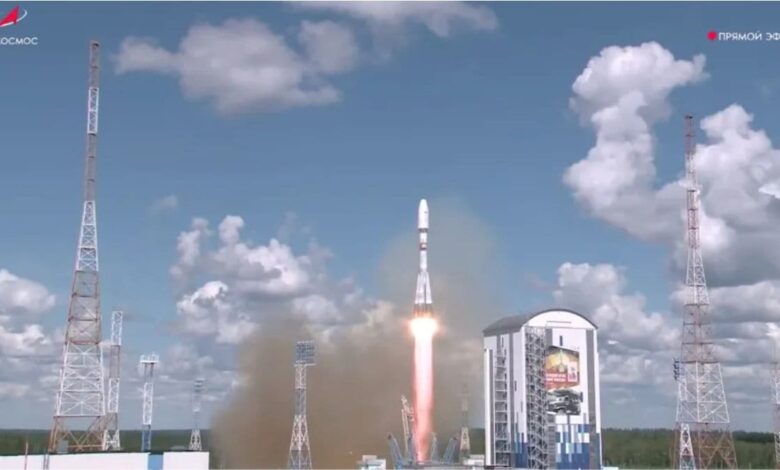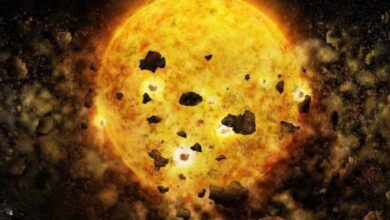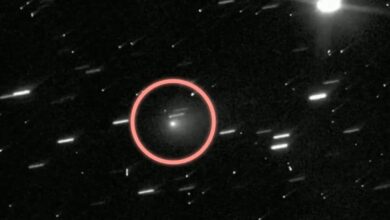Watch NASA, SpaceX Crew-11 Launch Live Online

Russia Launches Satellites for Space Weather Monitoring and Iranian Communications
On July 25, 2025, Russia successfully launched two new Ionosfera-M satellites into orbit aboard a Soyuz-2.1b rocket from the Vostochny Cosmodrome in Siberia. This mission also included the deployment of Iran’s Nahid-2 communications satellite. This collaborative effort highlights Russia’s commitment to scientific advancement and its growing partnership with Iran in space technology.
Ionosfera-M Satellites: Monitoring Earth’s Upper Atmosphere
The Ionosfera-M satellites are designed to monitor Earth’s upper atmosphere and space weather conditions. These conditions, especially the solar wind, can disrupt satellite operations and communication systems. The two new satellites complement a constellation of four, enhancing the monitoring capabilities.
- Purpose: Study space weather in the ionosphere.
- Orbit: Approximately 820 kilometers above Earth.
- Function: Track solar wind and related phenomena.
Expanding Coverage with New Satellites
The latest pair of Ionosfera-M satellites has been strategically placed in an orbital plane perpendicular to the first two. This arrangement significantly expands the three-dimensional coverage of near-Earth space, providing a more comprehensive understanding of space weather dynamics. Additionally, these satellites are equipped with a new Ozonometr-TM instrument to measure upper-atmosphere ozone levels, adding another layer of data to the mission.
Iranian Communications Satellite: Nahid-2
The Soyuz mission also carried Iran’s Nahid-2 communications satellite. This satellite is intended to enhance Iran’s civilian communications capabilities in space, a crucial asset given the country’s limited independent launch capabilities. Russia’s role in deploying Nahid-2 underscores the growing cooperation between the two nations in space technology.
International Implications and Cooperation
Russia’s support enables Iran to continue its satellite development efforts, despite international restrictions on rocket exports. This collaboration highlights the depth of the partnership between Moscow and Tehran in the space sector. It also underscores the geopolitical implications of such collaborative endeavors, showcasing Russia’s support for its allies’ space ambitions.
Space Weather and Its Impact
Space weather refers to the dynamic conditions in the space environment that can affect the performance of space-borne and ground-based technological systems. Solar flares and coronal mass ejections (CMEs) are major drivers of space weather, releasing vast amounts of energy and particles into space. These events can cause:
- Disruptions to satellite communications
- Interference with GPS signals
- Damage to power grids
- Radiation hazards to astronauts
The Importance of Monitoring Space Weather
Monitoring space weather is crucial for mitigating its potential impacts on critical infrastructure and technologies. The Ionosfera-M satellites play a vital role in this effort by providing valuable data on the conditions in the ionosphere and near-Earth space. This information helps scientists and engineers better understand and predict space weather events, allowing them to take proactive measures to protect vulnerable systems.
The Future of Space Weather Monitoring
As our reliance on space-based technologies continues to grow, the importance of space weather monitoring will only increase. Future missions and advancements in technology will further enhance our ability to understand and predict space weather, ensuring the continued reliability of our critical infrastructure.
| Satellite | Purpose | Orbit | Instruments |
|---|---|---|---|
| Ionosfera-M | Space Weather Monitoring | 820 km | Ozonometr-TM |
| Nahid-2 | Communications | N/A | N/A |
Additional Considerations
- The collaborative effort between Russia and Iran underscores the evolving landscape of international space cooperation.
- Continued monitoring of space weather is essential for protecting our increasingly interconnected world.
- The development of advanced technologies for space weather prediction remains a critical priority.




